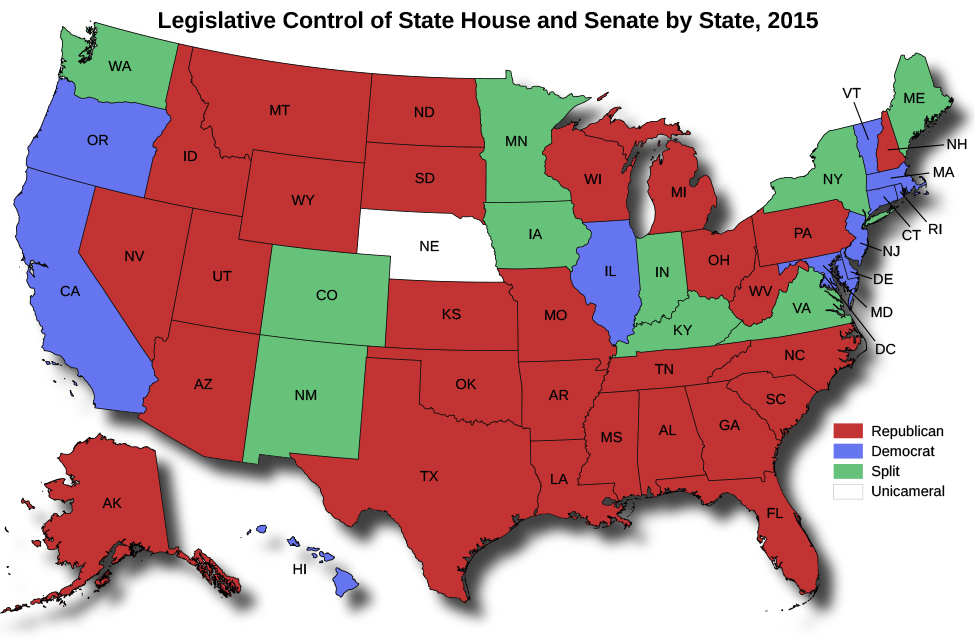| << Chapter < Page | Chapter >> Page > |
Scholars in political science have spent a great deal of time researching the impact of women and minorities on the legislative process and on voter participation and trust. Some research demonstrates that female and minority representatives are more likely to advocate for policies that are of interest to or will benefit minorities, women, and children.
You can compare the numbers and percentages of women in state legislature , state by state.
You can also compare the numbers and percentages of African American representatives .
Similar information about Latino representation in state legislatures is also available.
In 2014, twenty-six states had Republican majorities in the state house and senate, while in twenty states Democratic majorities were the norm. In just four states, party control was split so that the Democratic Party maintained control of one house while the Republican Party maintained control of the other.

Like diversity, party composition has consequences for policymaking. Governors who are not from the same party as the one controlling the legislature can find it more difficult to achieve their agenda. This governing circumstance is popularly referred to as divided government . In a time of divided government, a governor may have to work harder to build relationships and to broker consensus. In addition, when state party control is divided between the legislative and executive branches, the governor may find that legislators are more likely to muster the numbers to overturn at least some of their vetoes. In contrast, when the governor’s own party controls the legislature—a situation known as unified government —conventional wisdom suggests that they will have a smoother and more productive relationship with the legislature.

Notification Switch
Would you like to follow the 'American government' conversation and receive update notifications?